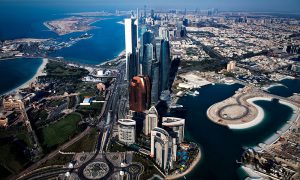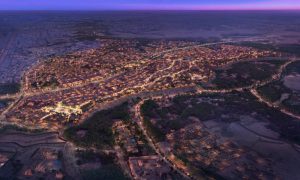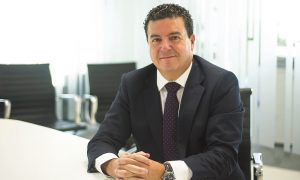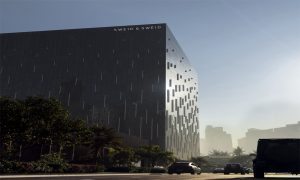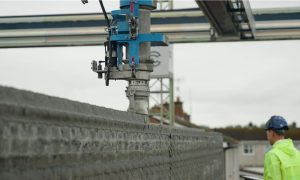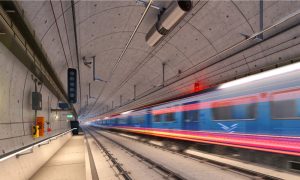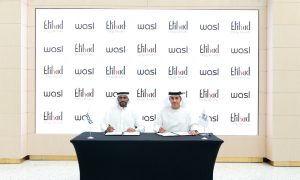Tackling the urban puzzle – AECOM interview
Jason Saundalkar sits down with several members of AECOM’s regional Urbanism + Planning team to discuss what future urban environments might look like and the challenges they have to tackle

AECOM’s regional Urbanism + Planning practice is spread across four studios and comprises 20 nationalities, split between architects, data analytics, landscape architects, planners and urban designers. The practice is focused on providing implementable solutions that encourage sustainable growth and promotes quality of life. The latter are key issues that have become even more important to government authorities and developers, following the disruptive outbreak of COVID-19 in early 2020.
Asked about the region and the key trends influencing the future design and plans of urban environments, Amer Mneimneh, vice president, Urbanism + Planning – Middle East and Africa at AECOM notes, “Urbanists in the region are placing increasing importance on promoting a high quality of life for communities and their populations. By aspiring to improve living conditions and standards, building pedestrian-friendly neighbourhoods and promoting healthy, vibrant and functional mixed-use developments, it’s clear to see how much emphasis today’s planners, designers, and developers are putting on quality of life.”
“We have also been seeing an increase in collaborative efforts between stakeholders involved in planning and design processes, which ultimately helps to ensure alignment and inclusivity in the delivery of development projects.”
Sanjay Tanwani, director, U+P Middle East, Abu Dhabi Studio Lead adds, “More recently, health and wellness have increasingly become integral parts of modern urban development, particularly due to the ongoing COVID-19 pandemic. This is highlighted in a recent thought leadership piece published by AECOM, entitled ‘Dubai: City as a Gym’ which studies the evolution of the wellness agenda in Dubai. We believe that through intensive policy coordination and investment choices, we can set in motion smart integrated planning and design – a step that will greatly help shape the future of cities.”
Future Requirements
Discussing some of the critical elements future urban environments have to focus on, Izlem Boylu, director, U+P Middle East, Urban Planning Lead says, “Firstly, to enrich the quality of life and promote sustainable solutions, it is critical that planning authorities develop design guidelines, which consider and incorporate technological tools that will help improve the comfort and experience of places.”
“Secondly, governments and authorities must ensure the public are engaged in planning and design processes by leveraging active smart governance measures. We’re already seeing this implemented through the collection of public data in smart apps, which is then used to create targeted solutions. However, an additional option of benefit in capturing public input is for authorities to actively invest in public-private partnerships that promote public participation.”
Mneimneh expands, “Our future urban environments must be planned to be smarter and more livable with an emphasis on increased responsiveness and resilience. With the advancement of intelligent technologies, future smart cities are well within our reach. We believe AECOM’s recently published Sustainable Legacies Strategy will enable better outcomes for clients through an increased focus on Environment, Social and Governance (ESG). Our commitment to community engagement in our projects will also give us a deeper understanding of the challenges communities face, thereby allowing us to draw up more innovative solutions that will propel the industry forward.”
Speaking about some of the main challenges designers and urban planners have to tackle within the UAE and Saudi Arabia, Tanwani comments, “One key challenge we have found in GCC markets is creating a balance between iconicity and livability. When we talk about livability, we refer to walkability, connected communities, mixed-use environments, new approaches to land segregation and an increasing use of transit-oriented development, as we transition away from private-car usage.”
“There’s no doubt that many GCC cities are global icons. However, if combined with context-driven urban planning and an increased quality of life, cities like Abu Dhabi, Dubai, Riyadh and others can become big contenders in the ranking of the world’s most livable cities.”
Zachary Jones, associate director, U+P KSA, Urban Planning notes, “Another hurdle is effectively tapping into cultural diversity. We need to be able to adapt existing urban environments – or create new ones – that cater to a melting pot of different demographics, ethnicities, cultures and religions in such ‘iconic’ cities. It is an opportunity for the urban planning and design industry to determine and activate cross-cultural and inclusive engagement. This would allow us as practitioners to learn from each other and actively discuss how contextualisation can be achieved in this market.”
Questioned about the challenges he faces as an urbanist, Jones says, “Working as an urbanist today comes with several challenges, many of which are driven by an increasing global population and rapid urbanisation. The portion of people living in urban areas around the world surpassed the halfway mark in 2008. Today, this number has increased to 56% and by 2050, it is expected to increase to approximately 68%. Naturally, this influx of people into cities around the world has resulted in a series of challenges, many of which have not been experienced before. These include providing reliable infrastructure systems and affordable housing to growing populations, mitigating pressure on natural resources and environments, and controlling pollution.”
Mneimneh says, “The field of cities is also a transient one that is constantly evolving around innovative technologies and tools. It is therefore critical to stay ahead of these trends and capitalize on the various elements that improve the efficiency of planning processes and promote the best possible outcome for communities. Considering these challenges, designers and planners are having to be resourceful, innovative, and engaged in responding to the unique challenges of today.”
Incorporating Resilience
Urban environments are massive undertakings that not only have to answer to requirements in the present but must have the resilience to address future requirements as well. Designing with future viability in mind can be quite a challenge and requires extensive thought and planning.
Boylu states, “As we know, cities are engines for development and provide opportunities for innovation and interaction. But cities can also exacerbate some of the world’s most severe environmental and socio-economic challenges – and our cities are typically the most vulnerable to these unprecedented risks.”
Steven Velegrinis, director, U+P Middle East, Urban Design Lead adds, “The keyword here is resilience, for both the cities and those who shape them. Let’s take the example of technology. Practitioners who make decisions around technology or have a stake in determining how technology is implemented must keep up to speed with technological changes and advancements – in terms of their competency, how authorities use and view it, and how it gets integrated into the urban environment. Technology continues to be upgraded and it needs to be resilient to tackle any urban problems.”
“Another aspect to consider is proposing localised rather than globalised solutions, staying relevant to ever-changing demand, understanding what local people need, and how it can be provided,” he highlights.
Describing what elements may characterise urban environments of the future, Boylu notes, “We see communities focusing on the user, through a human-centric approach. As already discussed, neighbourhoods will become more adaptable yet mixed in land uses, pedestrian-friendly, with efficient transit-oriented development and with a key focus on communal and open spaces.”
“Cities will also be smarter, with municipal governments leveraging cellular and power-efficient wireless technologies to connect infrastructure, paving the way for urban efficiency and improving the convenience and everyday life of residents. The fundamental change we anticipate in the urban environments of the future is the integration of technology and digital tools into our daily life. Beyond smart cities the next stage is intelligent cities, which will become the norm, with a technological solution for every urban issue,” adds Mneimneh.
Nick Askew, director, U+P Middle East, Landscape Lead elaborates, “Climate change will be the most difficult urban challenge for future cities, whereby cities will need to be flexible and durable to mitigate the complexities of short-term extreme weather events and medium-term events such as drought and coastal flooding. We will see the impact of such events due to the increase in frequency, intensity and duration. However, it is anticipated that the digitalisation of the city will enable city dwellers, authorities and city planners to predict and plan for such extreme conditions.”
Asked about whether there is global consensus on what cities and urban environments of the future might look like, Boylu notes that the international community is aligned on a couple of key issues.
“For starters, climate action is deemed critical because we can all agree that climate change is real, and as a result, cities must change their ‘narrative’ to become actively pro-environment. When planning and designing our future cities, we strongly believe that urban environments should be people centric. This is critical for successful urban environments. Urban environments should heavily focus on the user, and how the user mobilises through space. In particular, our communities must be designed to engage the user, with activated and easily transferable movement.”
Sarmistha Mandal, associate director, U+P Middle East, Landscape continues, “It is also critical that future urban environments are designed to consistently improve the user’s quality of life, with active mechanisms in place to monitor quality and tools to rectify any discrepancies. In response to climate change and creating a more systemic resilience within cities, it is essential that urban environments are designed and built to a net zero standard. This should be a universal requirement for development. This should be in addition to equitable design standards, ensuring equity and inclusion across urban spaces.”
Technology-Led Transformation
Powerful new innovations and technology have been coming to the market in recent years, which have begun to impact the way urban environments are designed and managed. Asked about whether new innovations could have an impact on the way future environments are designed, Velegrinis says, “Yes, absolutely. In today’s age, it is clear that we don’t need to stick to traditional tools if there are better options. As we already have modern alternatives available, we should certainly leverage them and keep working to advance solutions.”
Tanwani comments, “Here’s a snapshot of what a technology-led transformation would look like: citizens would engage with smart city ecosystems in various ways by using mobile devices, connected cars and smart homes. Pairing devices and data with a city’s physical infrastructure and services can cut costs, understand climate risk and improve sustainability; in fact, its advantages extend beyond planning and design processes – it can facilitate energy distribution, streamline trash collection, curb traffic congestion and improve air quality. And as cities grow more complex, Urban Analytics will help to fast-track centralised decision-making.”
“We have established digital initiatives that incorporate smart cities, digital twin and urban analytics tools to create a streamlined digital approach to design. This will be integral to the way we plan and design urban environments in a post-pandemic world.
He adds, “AECOM are pioneers in the digital and technological innovation that has been fast tracked through the COVID-19 pandemic. The pandemic has provided an opportunity for the critical thinkers, designers and planners at AECOM to create digital tools to plan and design safe, inclusive and sustainable cities.”
For some time now, data has been touted as the next big thing in the sector and is seen as the gateway to making informed decisions. Asked for his opinion on data and the Internet of Things (IoT), Tanwani explains, “The short answer is yes – but there’s obviously more to it. It is important to first understand what cloud-based IoT does; IoT applications receive, analyse and manage data in real-time to help municipalities, enterprises and citizens make informed decisions that optimise urban living.”
“It is important to understand that a lot of data is required before we can really reach a reliable output. The good news, however, is that these technologies can run in parts, without being dependent on each other. We can rely on data points – a one-step, two-step or multi-step process which then feeds into the larger process of building a holistic model. Consider the fact that not all buildings require a multi-censored approach, as having a smart grid in a place is a great start.”
Offering a different angle on the topic, Jones says, “We don’t need in-depth details before putting together a plan of action – what’s crucial are state-backed policies that support the collection of data, so that cities can get on board and begin the ‘cognitive’ journey. As information is gathered in real-time over years, even decades, each urban centre builds its own data legacy which gradually moulds a strong smart city ecosystem.”
Transportation Infrastructure
Moving to the subject of mobility and transportation in the region, it’s fair to say that there have been wide-ranging discussions about these issues over the last few years. The region has traditionally been defined by private vehicle ownership and thus there has been a fair push and investments into electric vehicles and supporting infrastructure.
Asked about his views on this subject and what the future of mobility and transportation might look like, Jones remarks, “In a region historically dominated by private car use, investment towards alternative sustainable and flexible modes of mobility are gaining significant momentum. Petrol-based vehicles are no longer seen as sustainable, particularly as a ‘one person-one car’ model. Instead, we are seeing greater emphasis towards alternative fuels such as electric vehicles and, in the slightly longer-term, autonomous vehicles. These modes could have the potential to reduce private car ownership through other growing trends, such as mobility as a service (MaaS). The scale of these shifts, however, will be dependent on the availability, capacity and cost of infrastructure and technology.”
Mandal says investment into alternative modes are gaining momentum in the region too, including integrated public transport schemes, sharing modes such as e-scooters and bikes, and more walkable neighbourhoods. “As these solutions gain momentum, ensuring seamless and convenient first and last-mile solutions will be key in achieving a greater shift,” he points out.
Askew notes, “For all trends, the design will be key in changing the culture of private vehicles and navigating the climate across the region. If we can make walking, public transport and electric vehicles the norm through good design, there is a real chance to influence more sustainable and smart travel habits and behaviours of future generations.”
The Value of Green Spaces
Regional authorities have in recent years begun devoting more space in their respective urban environments to green spaces. In fact, most recently, the Dubai 2040 Urban Master Plan outlined that by 2040 the city will see its green and recreational spaces double in size, while nature reserves and rural natural areas will constitute 60% of the city’s total area.
Explaining the importance of green spaces, Velegrinis says, “Green spaces have many benefits, and we can really only touch on a few of them here. Tangibly, green spaces in Gulf cities have had the truly remarkable impact of inverting urban heat island effects. Studies conducted by MIT and Masdar institute demonstrated that in Dubai urban greening has led to a situation where summer temperatures in the city are up to ten degrees cooler than the surrounding open desert. This is a pattern repeated around the Gulf and nowhere else in the world.”
Askew continues, “Obviously, there are also immensely important effects at the ground level for city dwellers in terms of shade, comfort, air quality improvement and oxygen creation amongst others. We construct buildings to protect ourselves from nature and other forces, we spend increasing amounts of time in these buildings, 90% of our lives is indoors. Whilst these places are designed to keep us safe, to protect us from the elements. But many of the places where we spend our time also get in the way of our health and wellbeing.”
Mandal adds, “Intangible benefits of green spaces are enormously important too. Key amongst them are the environmental psychology benefits of biophilic design. We as humans are hard-wired to prefer landscapes where there is prospect and refuge opportunities and a savanna-like landscape of trees and grasslands. There are quantifiable benefits and we can see that in environmental psychology terms there are measurable benefits to certain landscape types that psychologically and physiologically benefit wellbeing in human communities. People staying in hospital rooms that have a view to a treed landscape require on average 20% less pain medication, stress levels are reduced for those with access to views of certain landscape types. The Japanese practice of ‘Forest Bathing’ is now a prescription medical treatment. So those intangibles become critical when thinking about the livability of cities.”
Discussing how these green spaces can be maintained sustainably, given the challenging weather conditions in the region, Askew states, “Again, in the Gulf, nations have been world leaders in relation to reuse of 100% of wastewater and even today, around 30% of recycled water is released to the sea so we have an excellent framework from which to work. We also have access now to both soil amendment systems and irrigation systems that can reduce irrigation consumption by up to 80%. Zero irrigation systems using certain types of vegetation can also be employed on massive scales.”
Velegrinis points out, “As the Intergovernmental Panel on Climate Change (IPCC) recent reports indicate, heat and heat stress pose one of the greatest threats to livability in the region. We need to be careful and strategic about how we make the best use of these resources, as greenery is an increasingly important form of green infrastructure. We also need to stop thinking about green spaces as simply ‘exterior decoration’ and make our urban landscapes biologically functional. They can be used to clean water, to grow food, to reduce urban heat island effects and to grow fuels. As professionals we need to reconceive how the “New Natures” we create can be ecologically and functionally hyper-productive.”
Making his closing statement, Mneimneh concludes, “Building on AECOM’s Sustainable Legacies Strategy, our Urbanism + Planning team actively incorporates sustainable principles in all projects, irrespective of scale or size. When approaching sustainability, we challenge our teams to think outside the box, to look deeper at the elements of cities that make them more socially equitable and engaging, economically viable and environmentally conscious. With that approach, we believe that the outcomes will inherently and inevitably be places that are vibrant, equitable and unique, and offer a high quality of life for all.”
